Amazing what the Clean Air Act and a nice wash can do–Indianapolis’ Saints Peter and Paul Cathedral looks great. The seat of the Archdiocese of Indianapolis, the actual parish here is pretty small, only ~150 families or so - I have to imagine it’s relatively uncommon for the cathedral parish to be one of the smaller parishes in the archdiocese, but I have no concrete data to back that up. Designed by William Whetten Renwick of Renwick, Aspinwall and Russell (yeah, you recognize that name - his uncle James designed St. Patrick’s Cathedral in New York, amongst a million other buildings), Saints Peter & Paul Cathedral was mostly completed in 1907, but they came back and gave it a gussied up neoclassical facade with Corinthian columns in 1936.
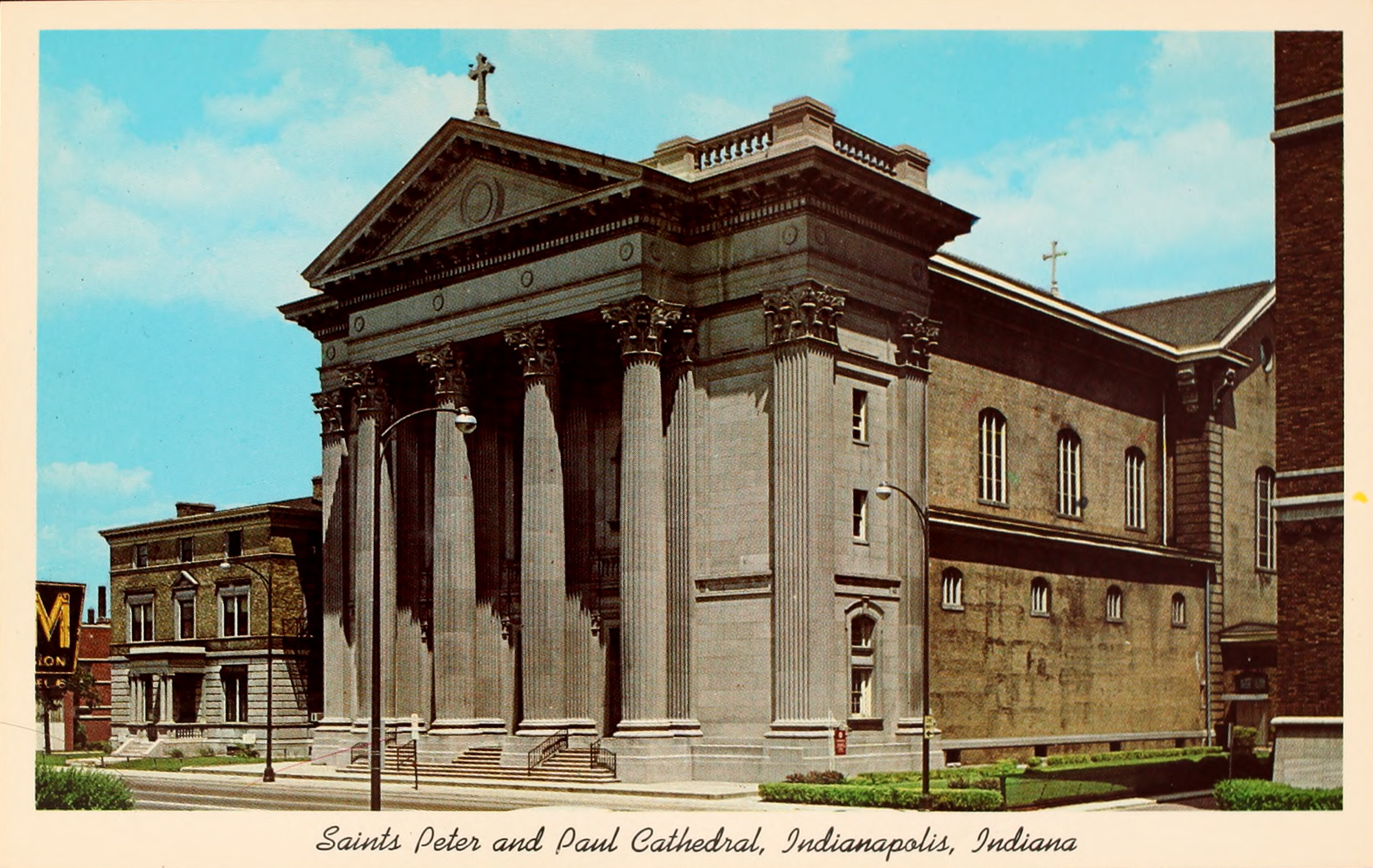
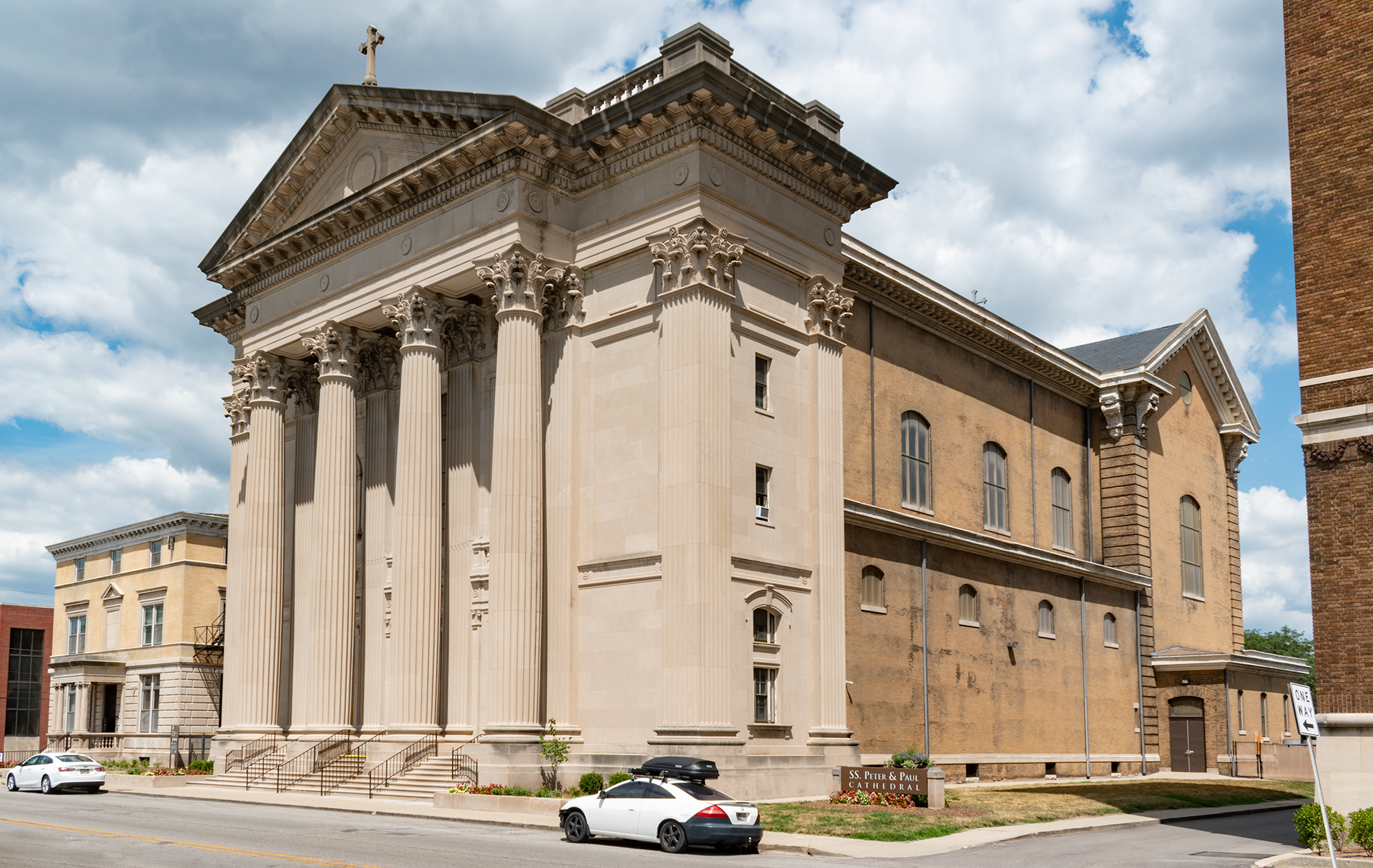
From start to finish, it took more than 50 years to complete the seat of the Archdiocese of Indianapolis. Planning began in 1878 when Bishop Chatard moved to Indianapolis from the diocese’ original location in…Vincennes (man, the early settler history of the Midwest is odd). With the diocese temporarily based at the pro-cathedral of St. John the Evangelist, they went to work building the Renaissance Revival palazzo complex that would be the diocese official home.
The first building completed was actually that little guy on the left, the rectory, which was designed by (James) Renwick, Aspinwall and Russell and completed in 1892. However, they couldn’t proceed until Rome officially transferred the seat to Indy, which happened in 1898 - by which point James Renwick had died.
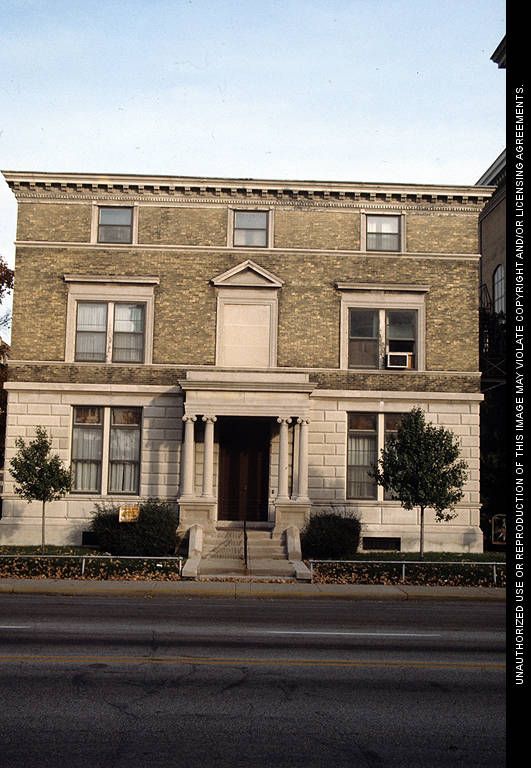
Construction on the cathedral, designed by William Whetten Renwick, finished up in 1907 (they dedicated it a bit early, in 1906, so the nearly-complete cathedral could host Christmas mass). Again, I’m using “finished” loosely - it was an incredibly austere box without the envisioned spires and opulent facade.
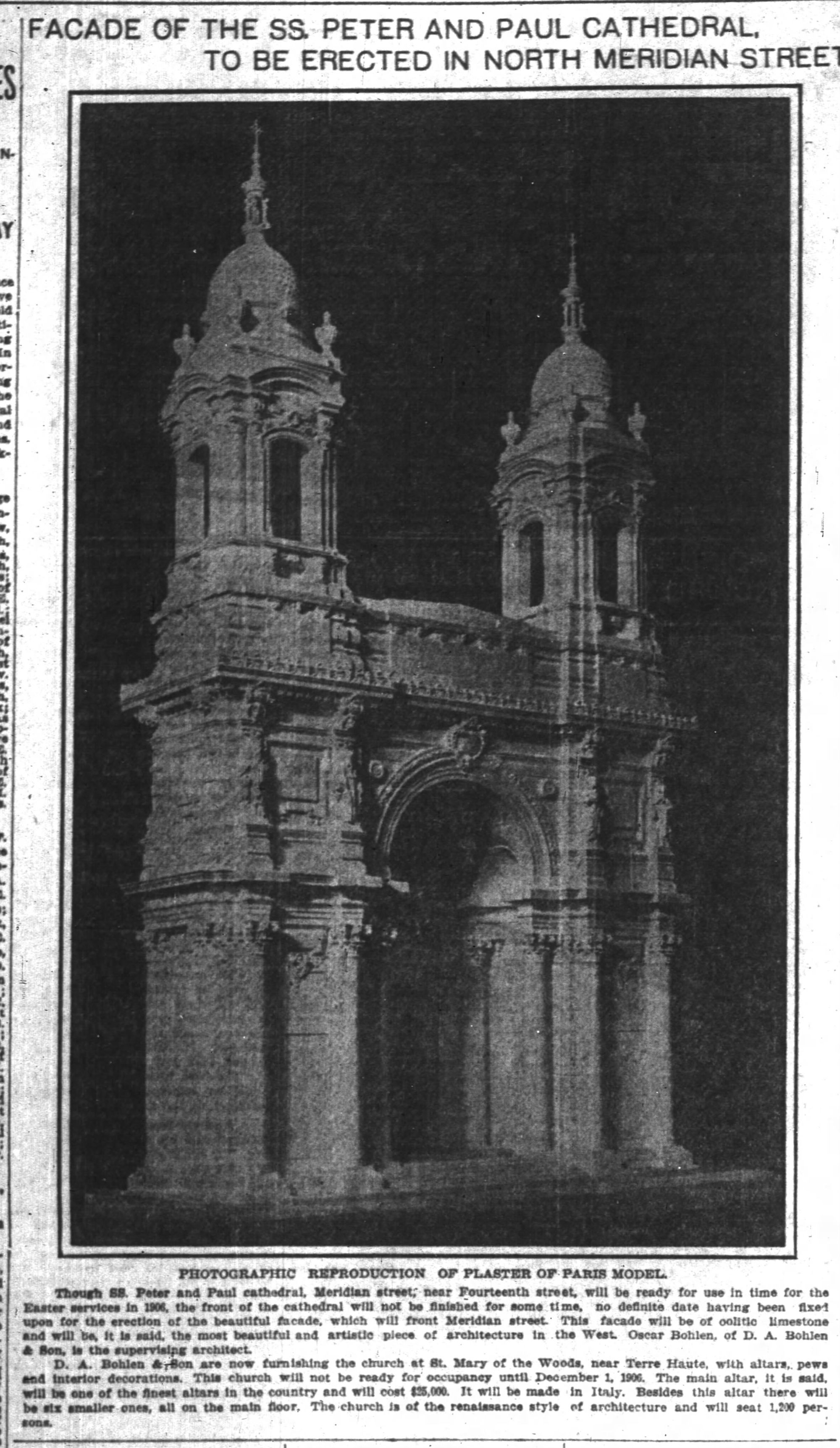
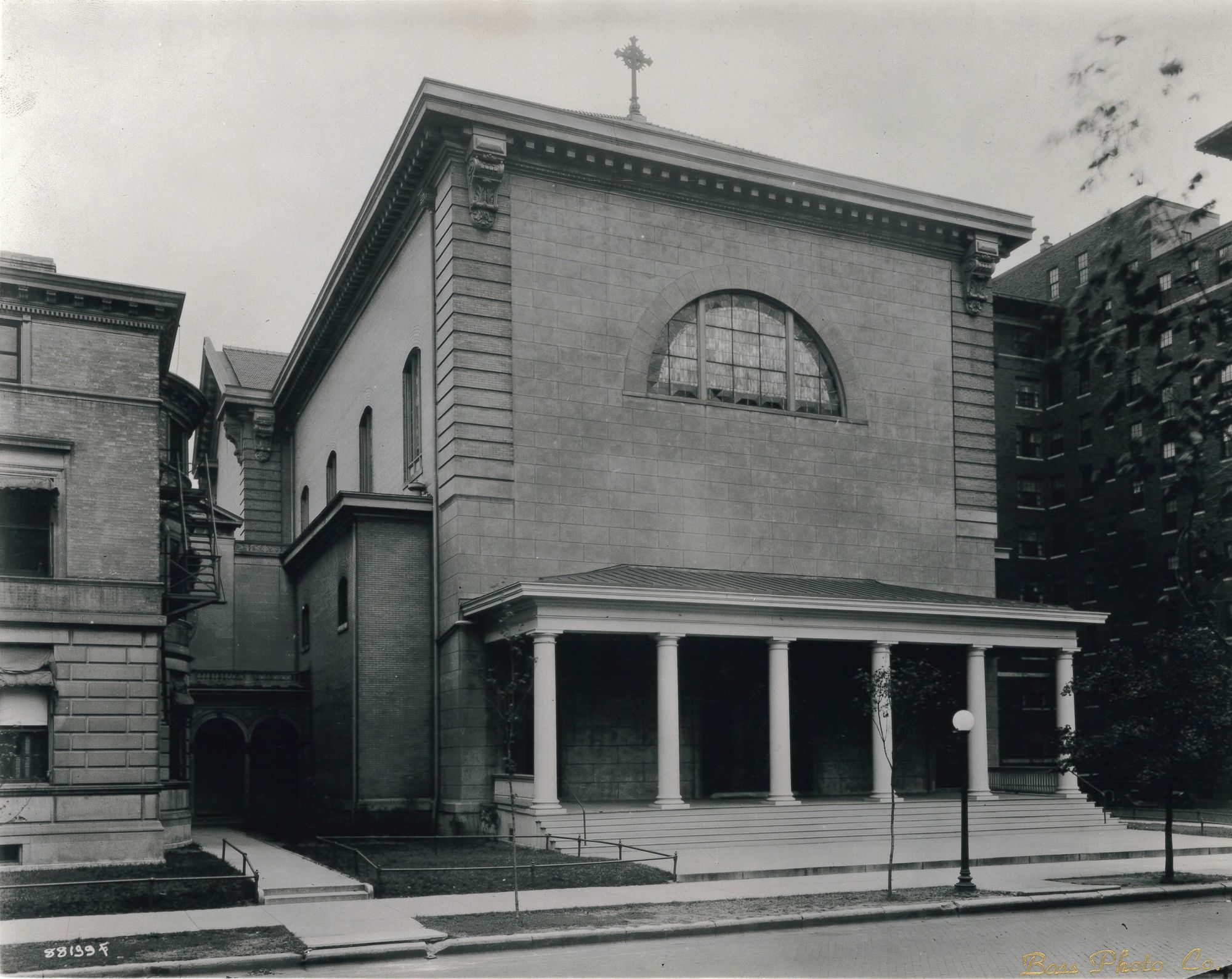
They got around to it eventually. In the 1930s Bishop Joseph Ritter hired - who else? - Indy hometown hero firm D.A. Boehlen & Son to complete the facade (again, D.A. was long dead and this was actually the grandson, August). Instead of the original Renaissance Revival facade, the Indy firm gave us something out of a classic Roman temple, with the new facade completed in 1936. To Bishop Ritter’s credit, completing the cathedral was a minor footnote in his career - more importantly, he desegregated all of the Catholic schools under the diocese purview in 1938, a courageous move years before Brown vs. Board of Ed and in a state known for the Indiana Klan.
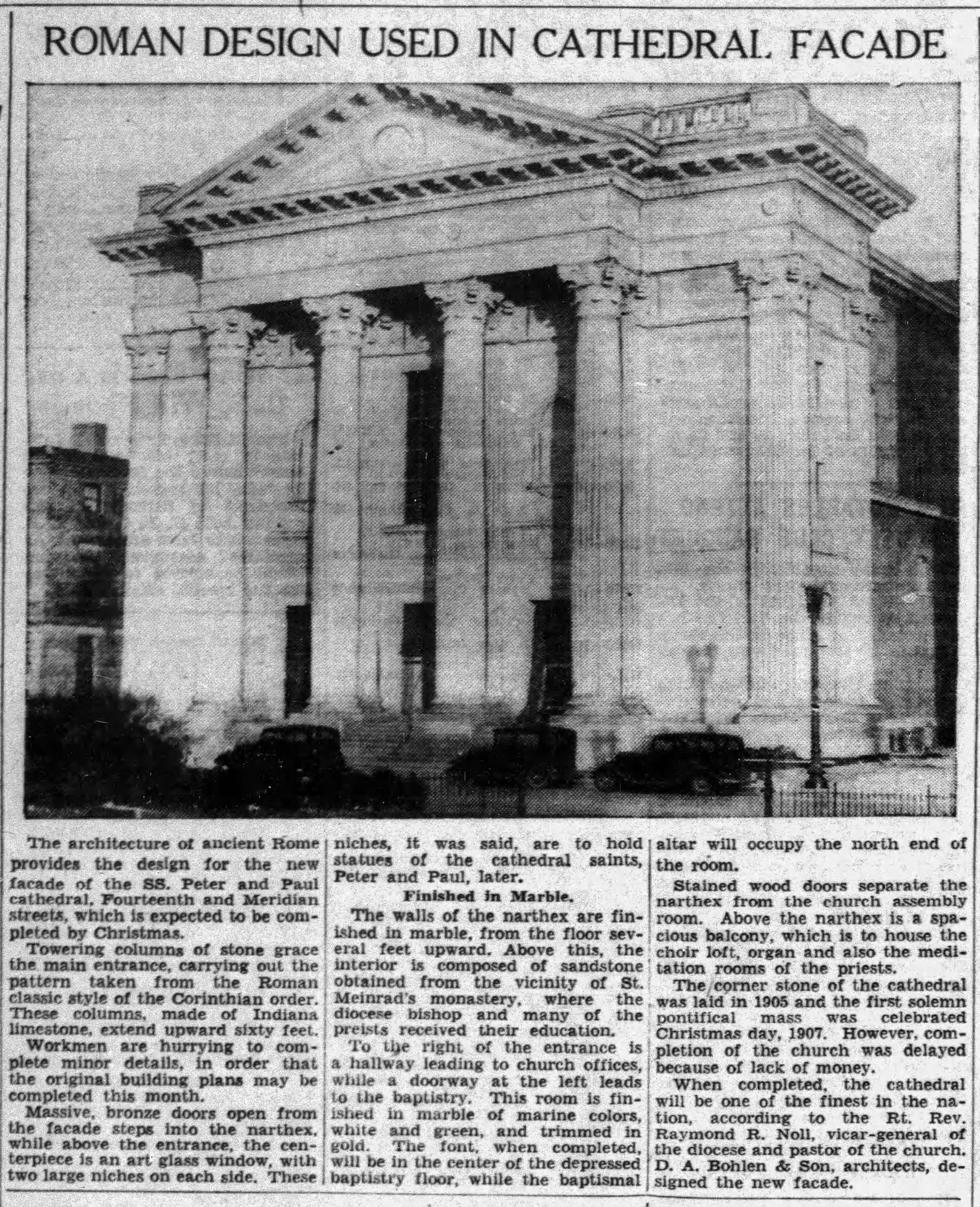
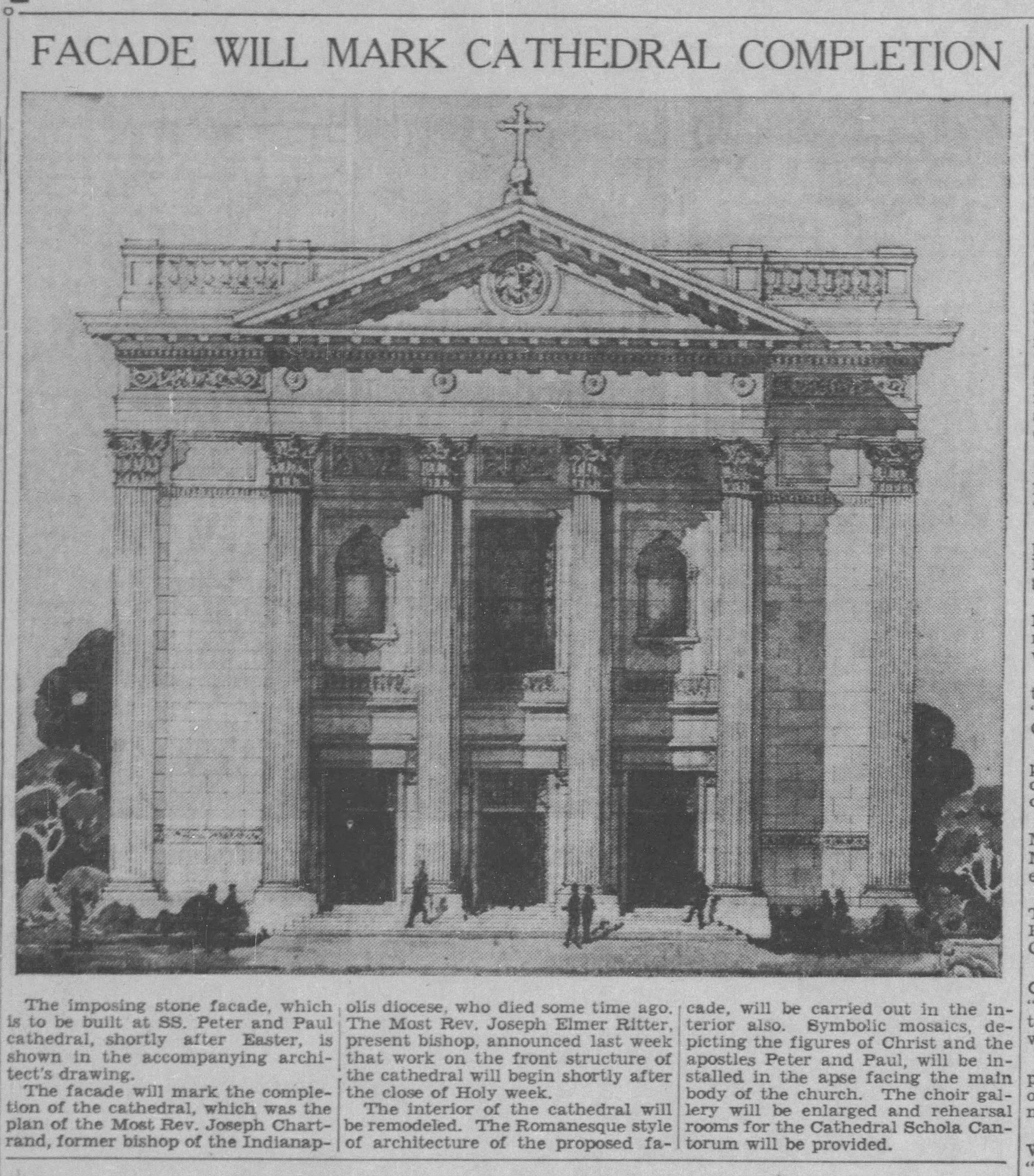
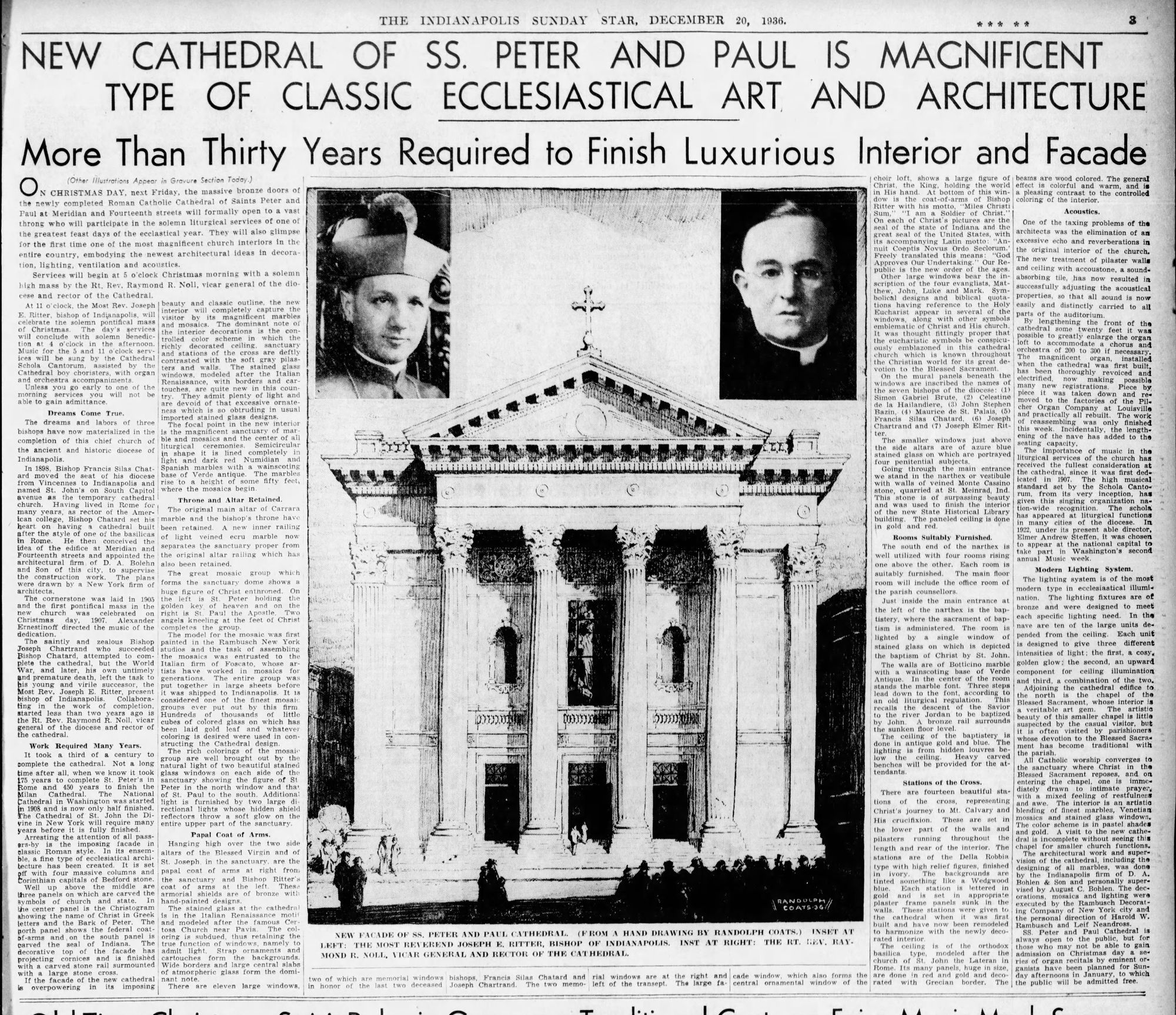
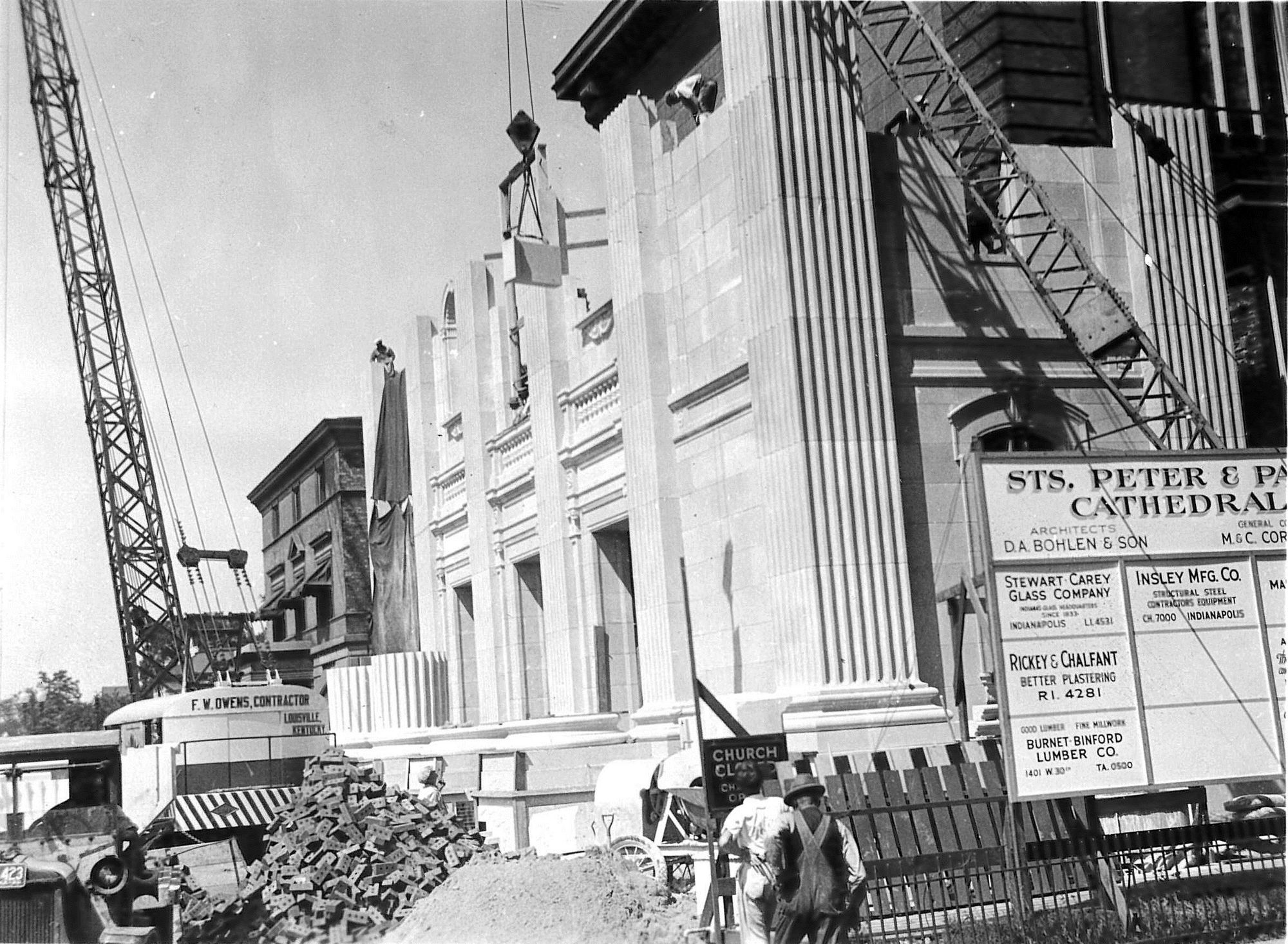
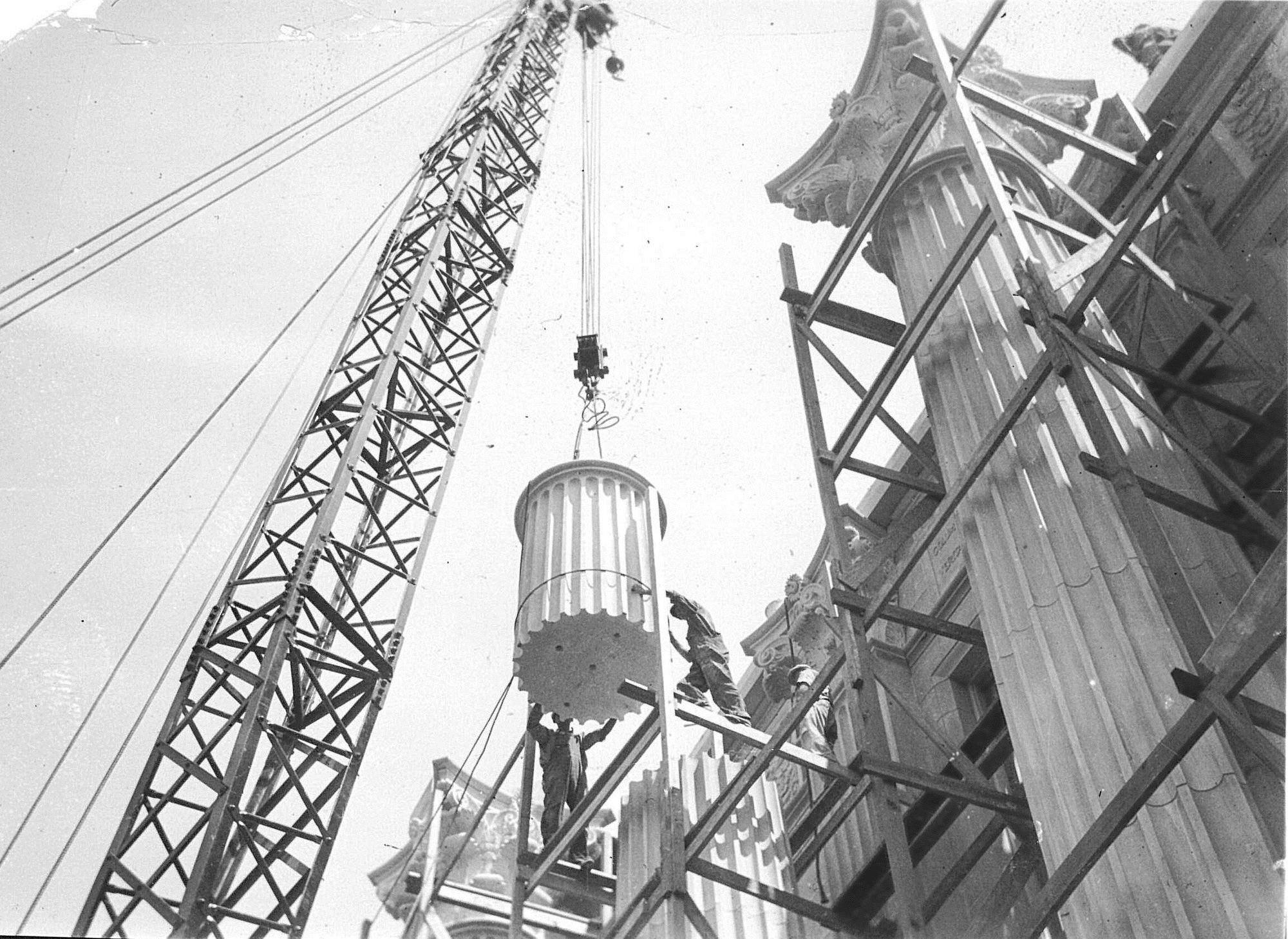
In retrospect, the size of the parish had already peaked by the time they had fully finished the cathedral - membership hit 4,950 in 1928. Soot and pollution tarnishing its limestone wasn’t the only challenge SS. Peter & Paul faced in midcentury - I-65 demolished a swath of the city surrounding the church, displacing some of the parish congregation. Disinvestment and white flight took another chunk.
In an effort to revitalize the parish and bring the cathedral in line with the reforms of Vatican II, the church was renovated by influential ecclesiastical modernist firm Sovik Mathre Sathrum Quanbeck in 1985-1986. Architect Edward Sovik literally wrote a book titled Architecture for Worship, and he was responsible for a whole host of church renovations in the 1970s and 1980s. Sovik believed in a “Single-space church”, which would be a unified body of believers rather than an audience watching a performance - Sovik's austere, luminous, and non-heirarchical sanctuaries pissed off tradionalists (well done).
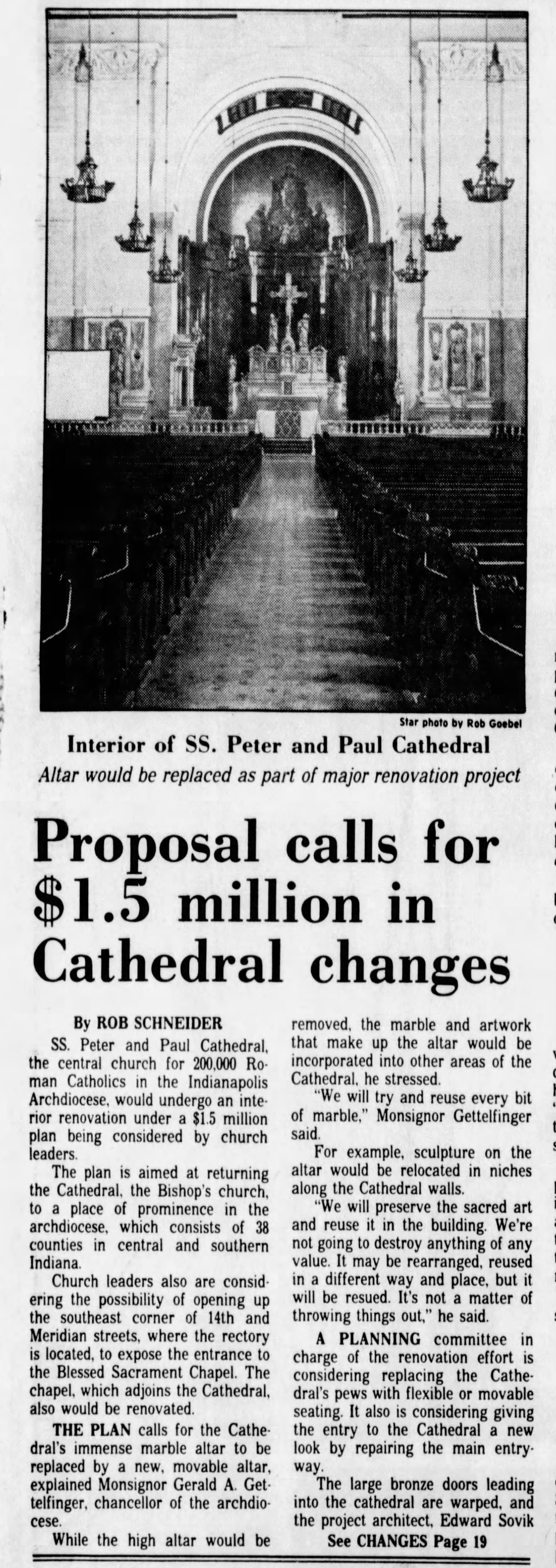
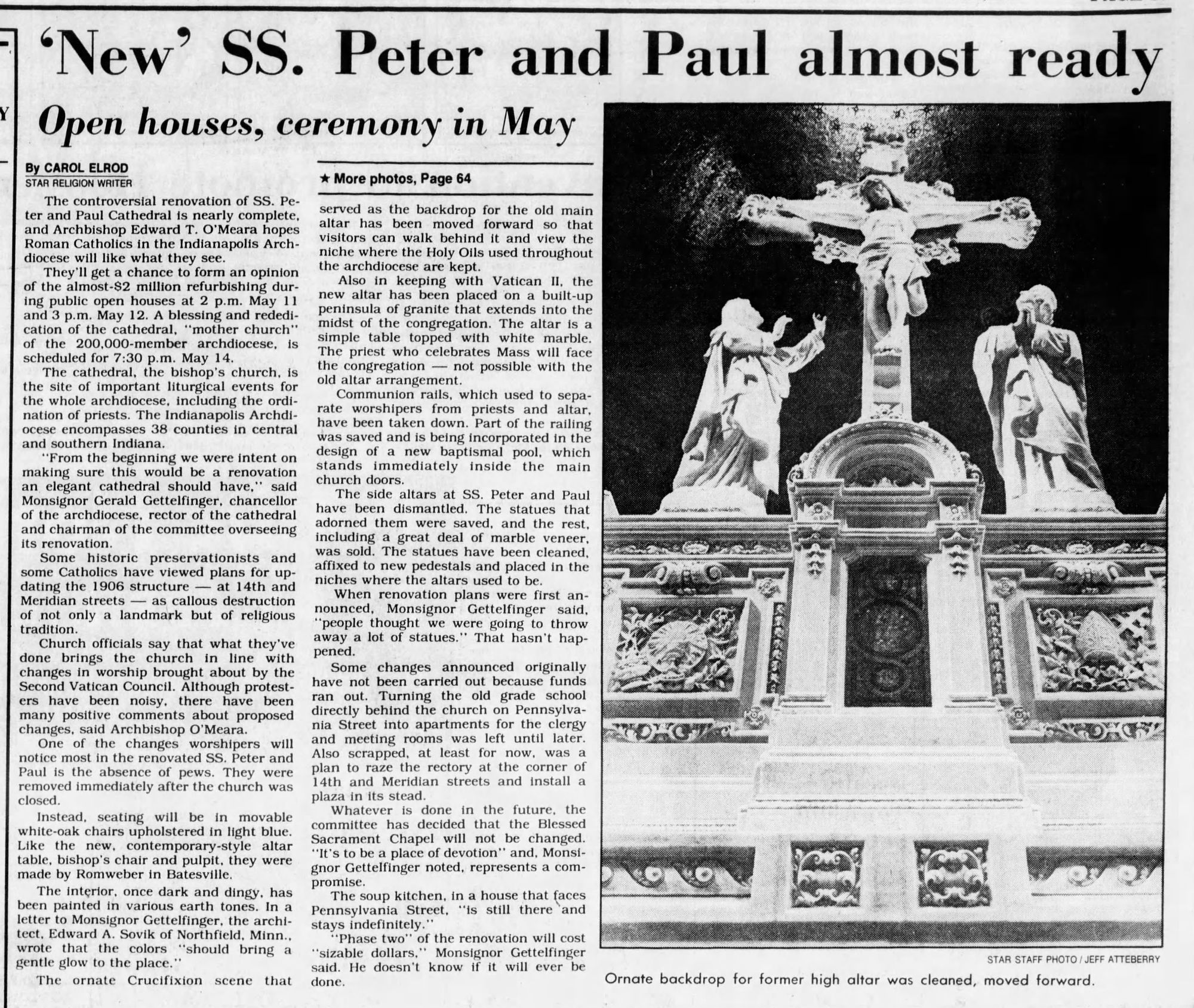
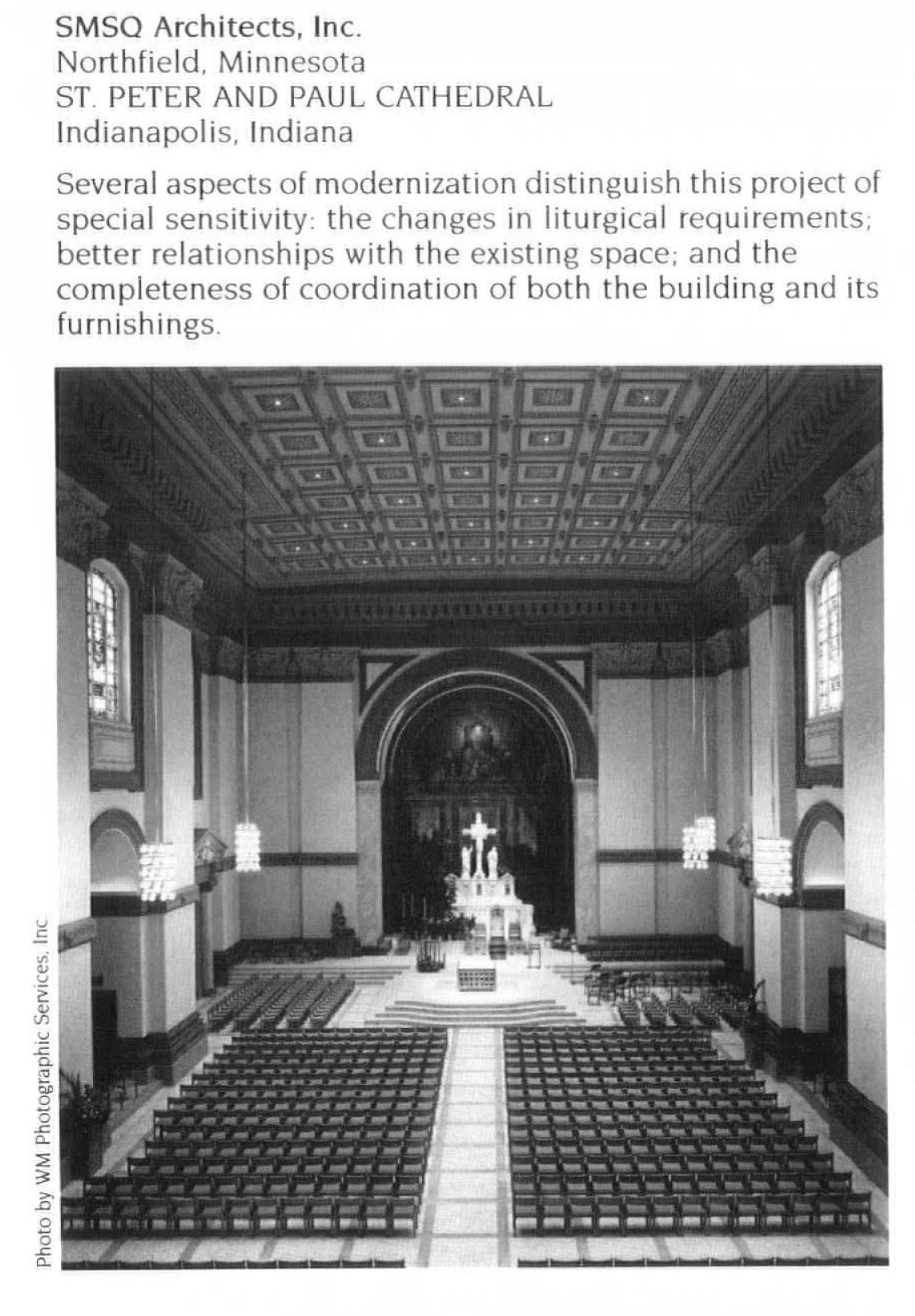
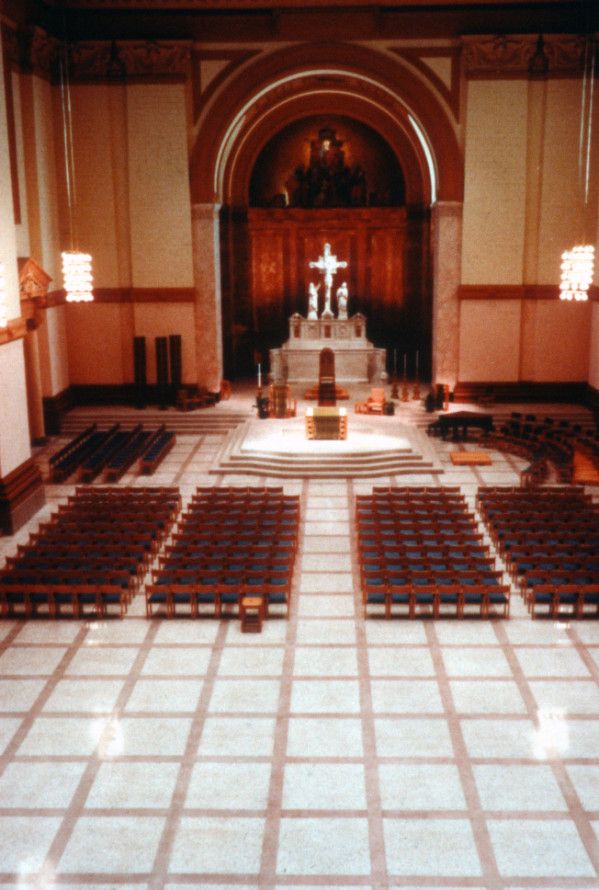
Despite the renovations, the Catholic parishes of Indianapolis continued to shrink, so the archdiocese consolidated some parishes in the early 2000s. Here, the Archdiocese of Indianapolis merged the Saints Peter and Paul cathedral parish with a nearby Black parish, St. Bridget. Though it’s a small parish today of roughly 150 families, that the seat of the Archdiocese of Indianapolis is a racially integrated parish strikes me as a worthy legacy of Bishop Ritter.
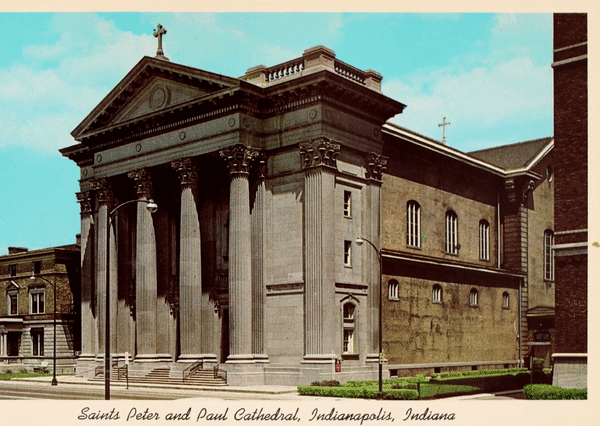
Production Files
Primary sources, rhizomatic reading, odds and ends that turned up in researching this.


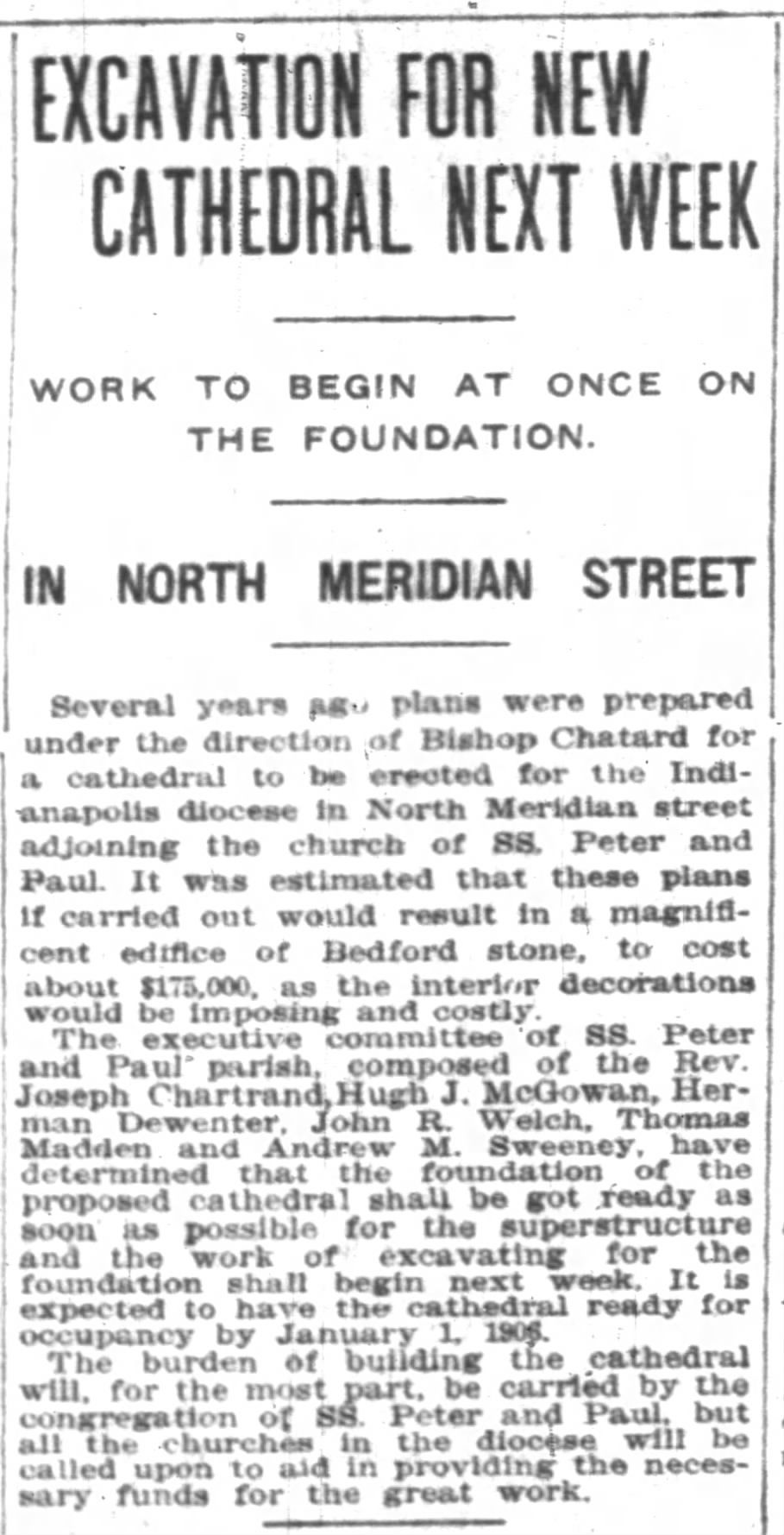

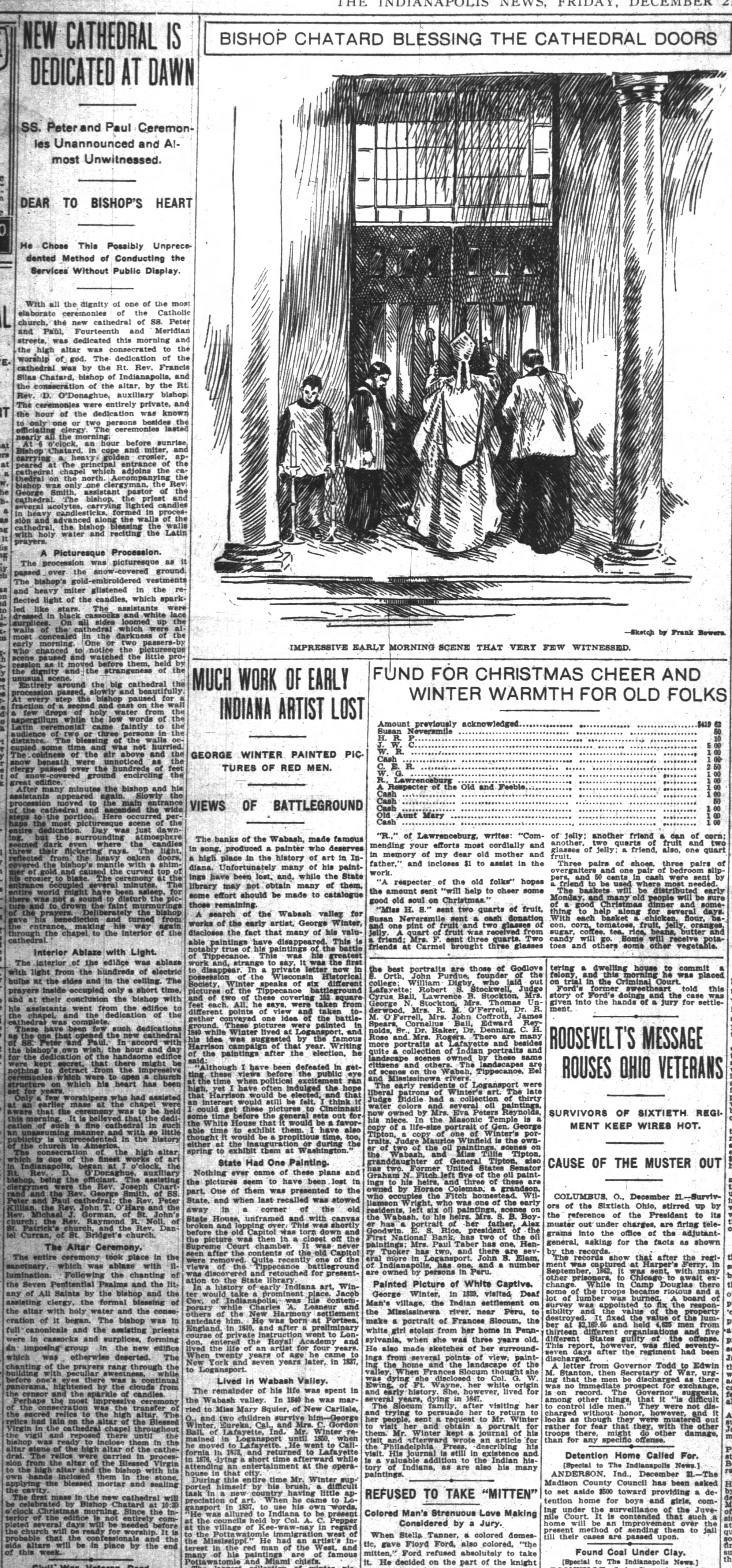
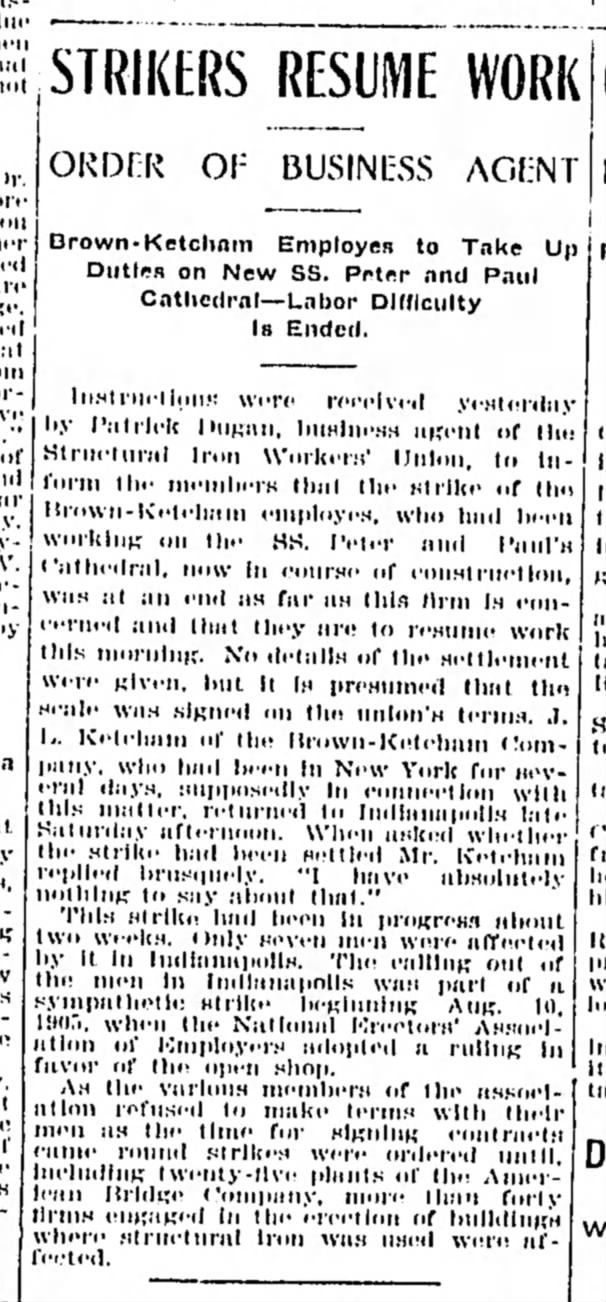
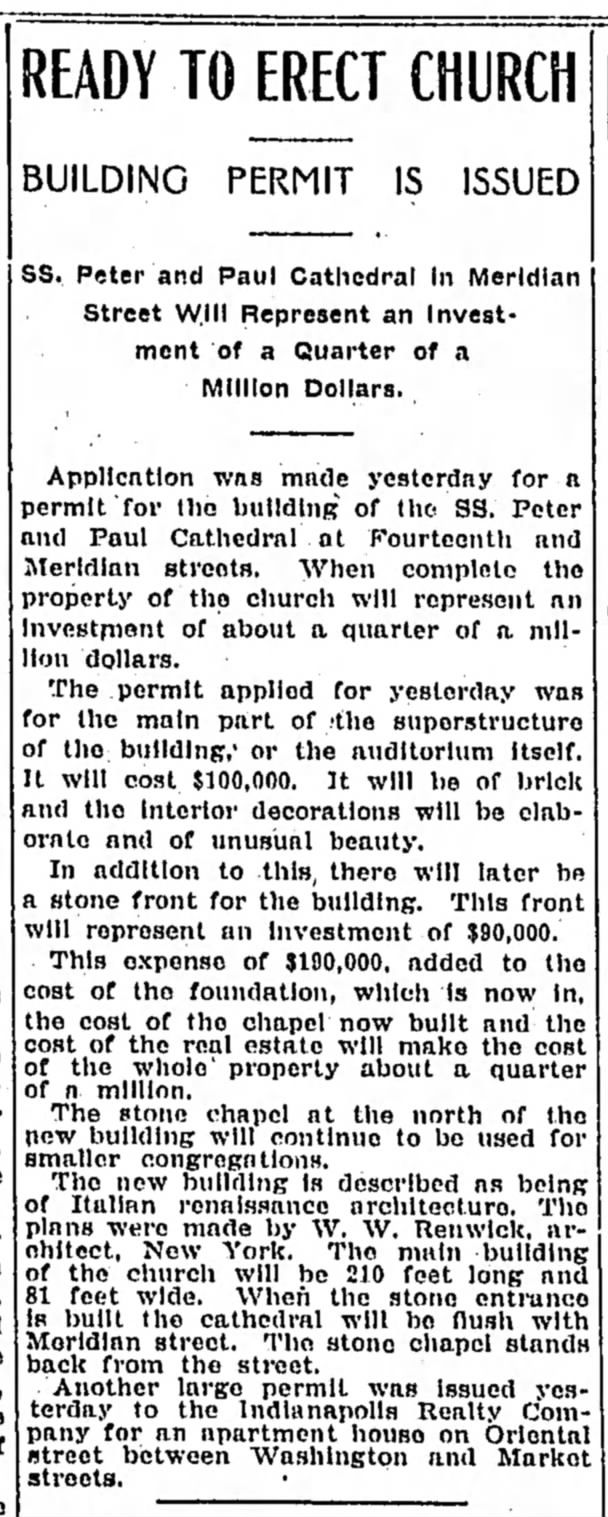
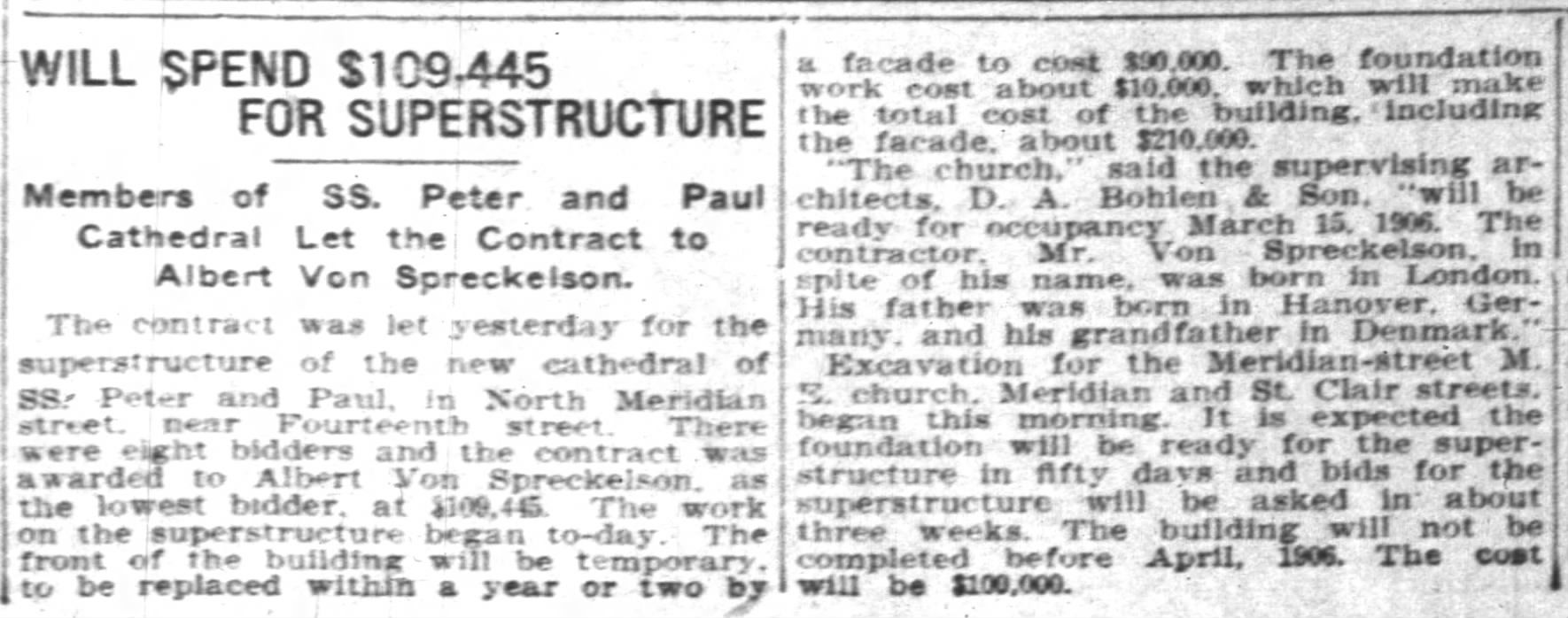
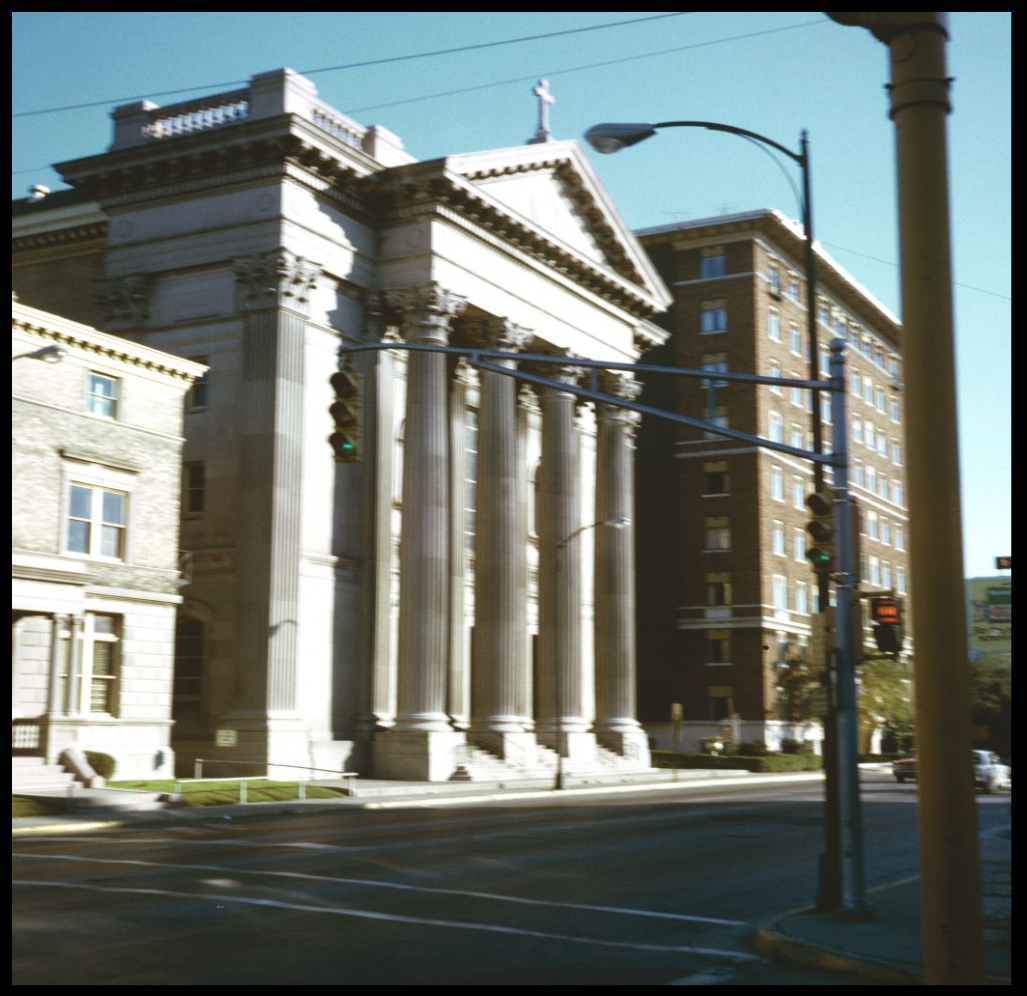
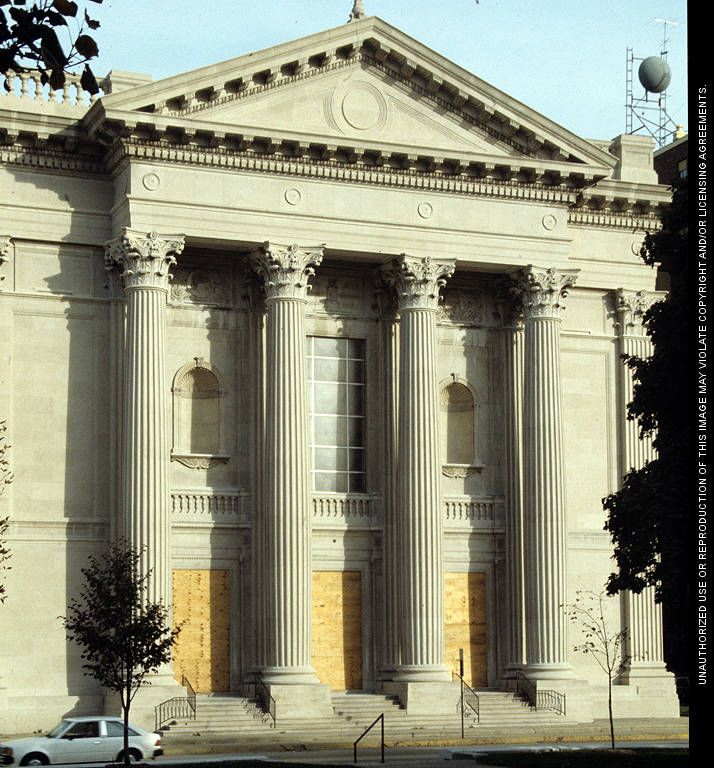
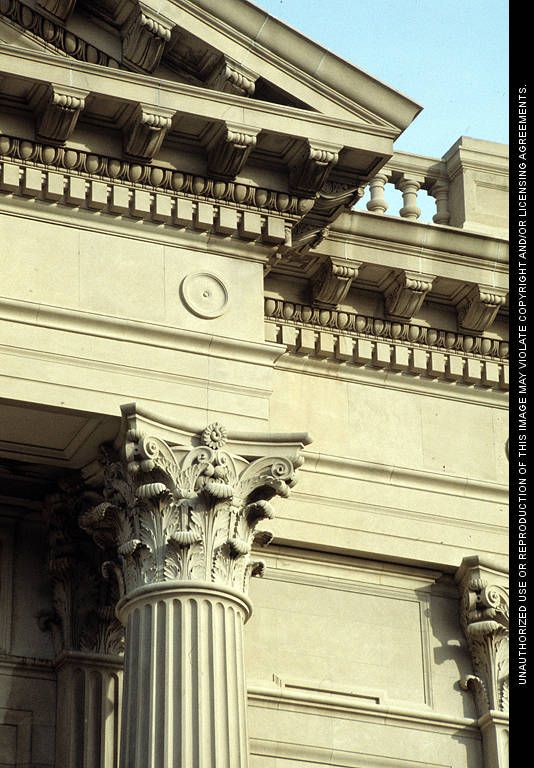
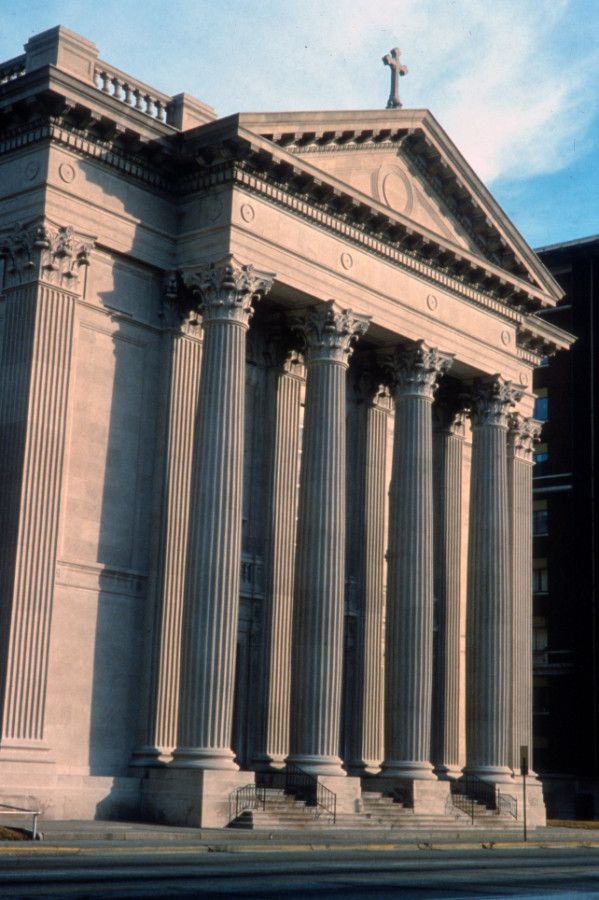
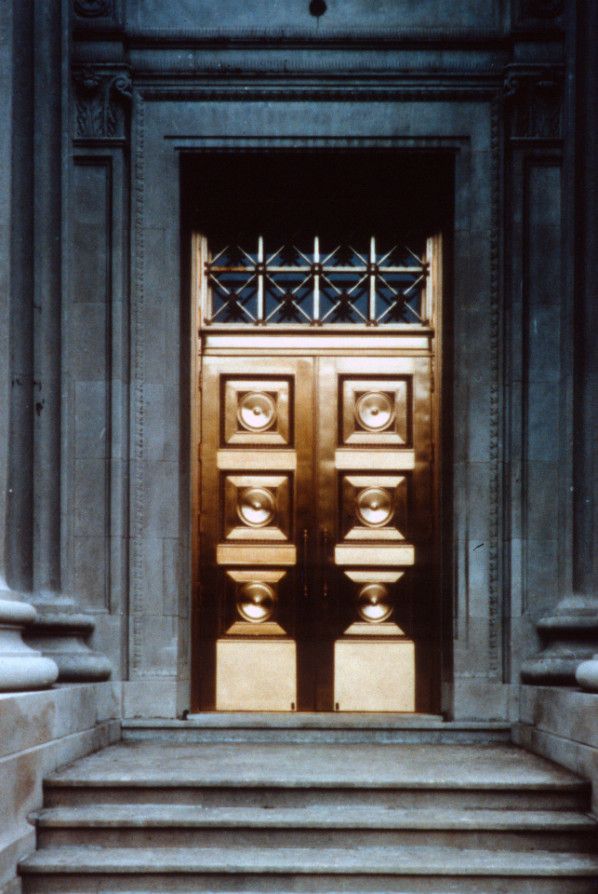
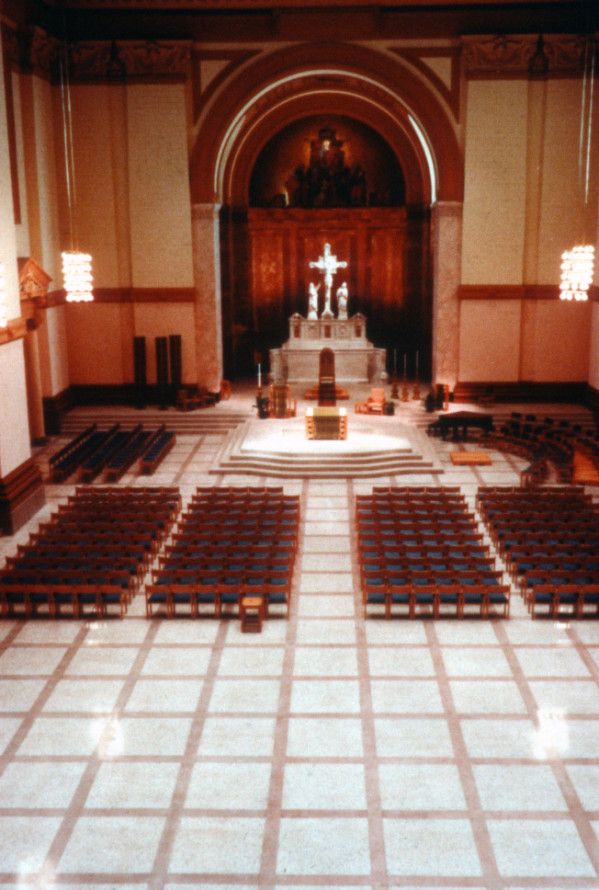
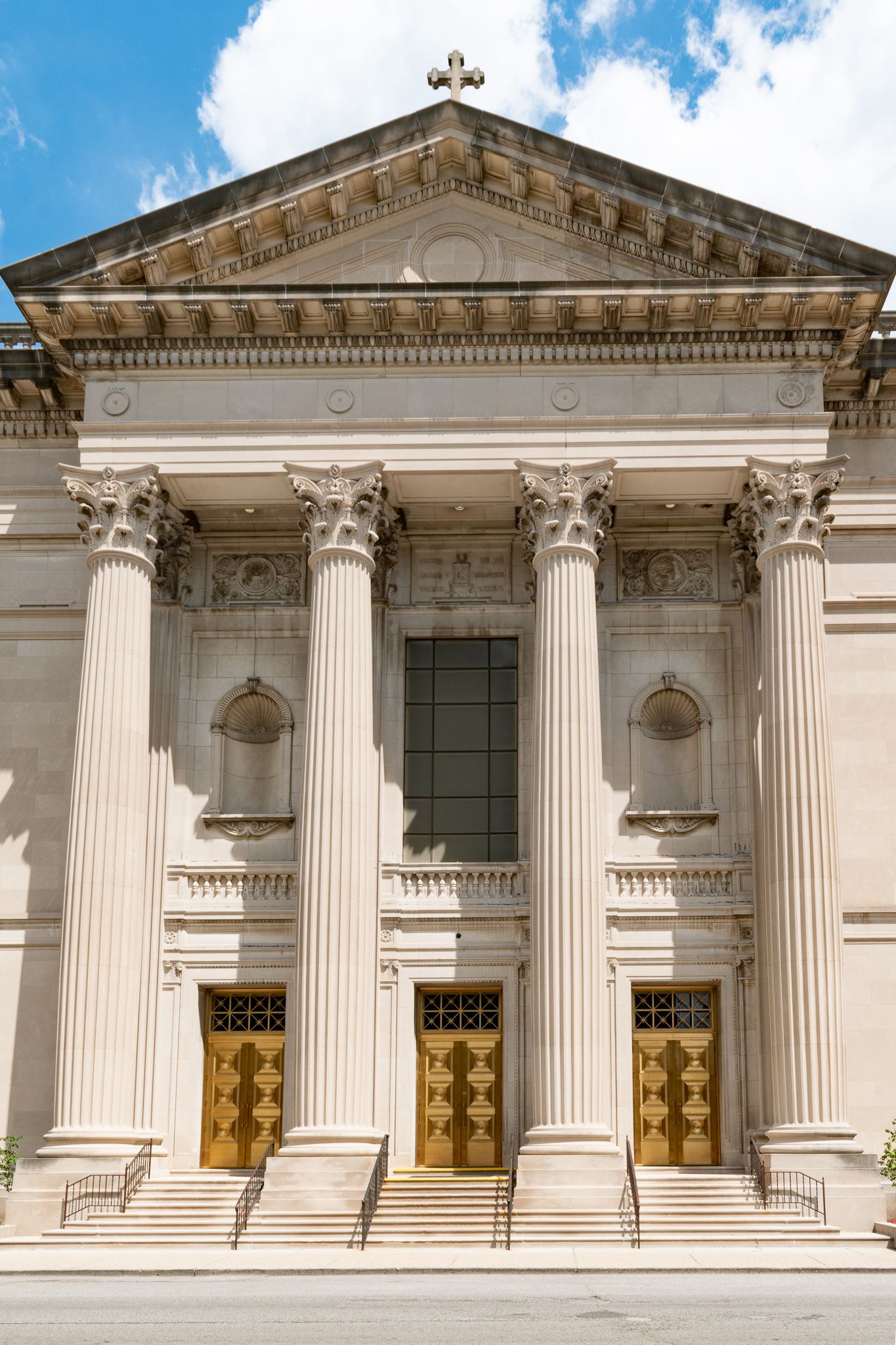
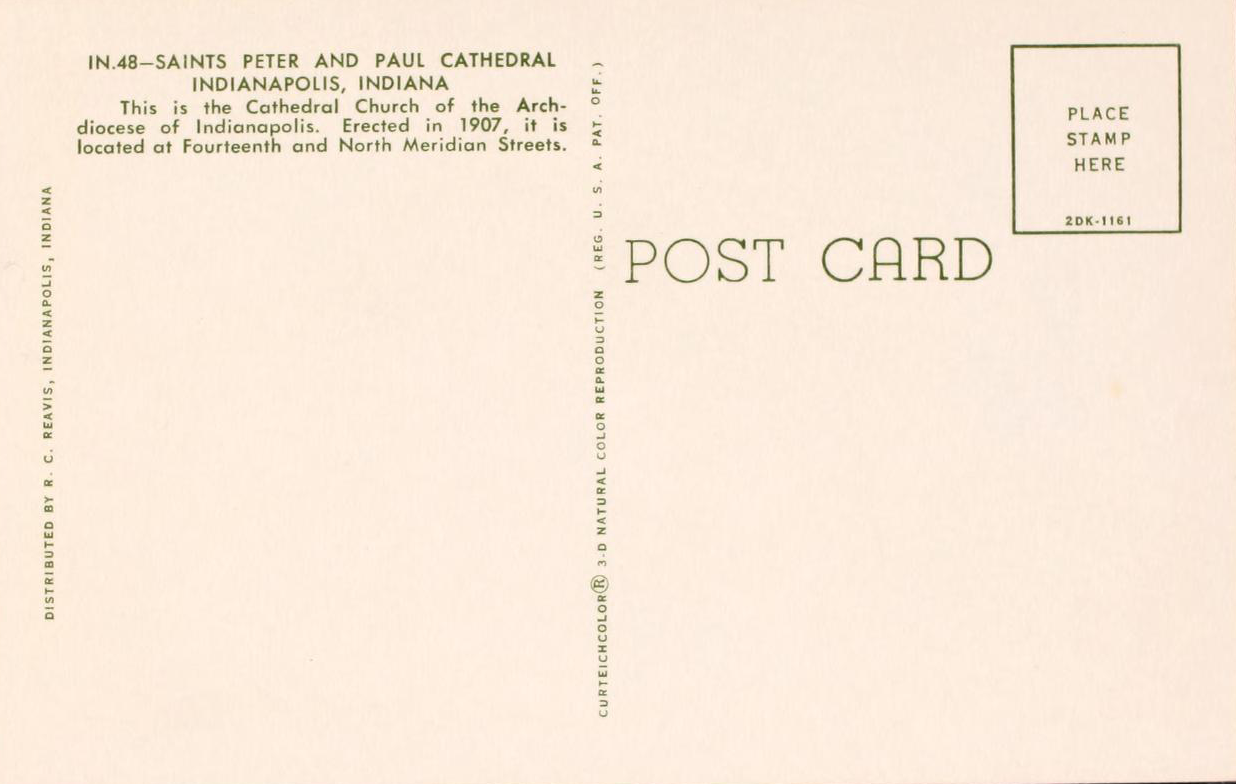

Member discussion: